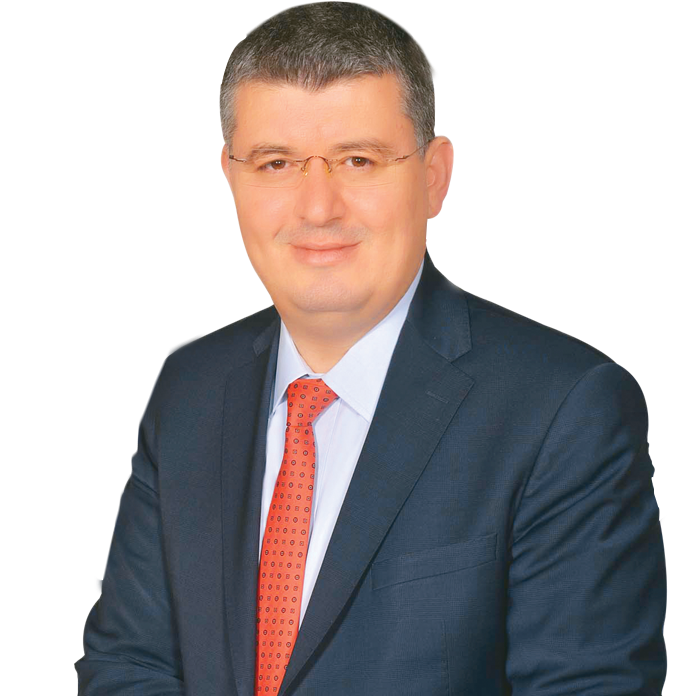
- 03.07.2025, Thursday
- 23:51
Will the US keep its end of the Syria safe zone deal?
08:078/08/2019, Thursday
U: 8/08/2019, Thursday
Next article
Mehmet Acet
Mehmet Acet was born in 1976 in the Turkish city of Konya, where he attended primary and middle school. After graduating from Marmara University’s Communications Faculty in Turkey, Acet started his career by interning for TRT in 1995. A year later, he started working as a reporter on the foreign news desk at Kanal 7. He made a name for himself when he broadcasted to the world footage of the war in Kosovo. In 2005, he became the youngest manager of Kanal 7 when he was appointed as the Ankara representative of the channel. Acet, who has been the Ankara representative of Kanal 7 for 11 years, participates in weekly political programs on both Kanal 7 and Ülke TV. He is married and has two children.

After the National Security Council meeting held the previous evening, Turkish President Recep Tayyip Erdoğan met with National Defense Minister Hulusi Akar.Minister Akar briefed Erdoğan on talks held on Monday and Tuesday with the U.S. military delegation for northeast Syria.Akar, answering reporters’ questions yesterday morning said, "We welcomed the reconciliation of views with our interlocutors. The meetings were positive, very constructive," he said.The elaboration made by the Defense Minis
After the National Security Council meeting held the previous evening, Turkish President Recep Tayyip Erdoğan met with National Defense Minister Hulusi Akar.
Minister Akar briefed Erdoğan on talks held on Monday and Tuesday with the U.S. military delegation for northeast Syria.
Akar, answering reporters’ questions yesterday morning said, "We welcomed the reconciliation of views with our interlocutors. The meetings were positive, very constructive," he said.
The elaboration made by the Defense Minister, summarized in no uncertain terms Turkey’s position on the safe zone:
“It should be 30-40 kilometers deep; terrorists of the YPG in this area should be removed completely; the heavy weapons they possess must be collected and taken out of the zone; additionally, the destruction of numerous tunnels, fortifications and positions built by terrorists should be carried out. We have clearly stated our demands, which would be carried out by both Turkish and U.S. troops.”
Later in the day, the main framework of the agreement reached with the U.S. delegation was announced to the public by the Ministry of Defense.
The three-article statement was announced as follows:
- The immediate implementation of the measures to be taken in the first step to address Turkey’s security concerns.
- A Joint Operation Center in Turkey to coordinate and manage the establishment of the safe-zone will be set up
- Subsequently, it was agreed that the safe-zone would become a "peace corridor" for displaced Syrians who want to return to their country.
The brokering of such an agreement is undoubtedly important.
But beyond that, we’re going to have to see what the implementation will look like.
Why are we stressing the “implementation” of the agreement?
Because there are more than enough examples portraying how the United States completely disregarded on the field all agreements that had been reached at the negotiating table.
For example, the Manbij agreement between the two countries' foreign ministers in line with the consensus reached in the summer of 2018 and whose implementation “must have been completed” remained so in words only.
Under these circumstances, the question of whether we will witness a new version of the U.S. traditional "stalling" tactics is a huge enigma today.
The question of what Turkey plans to do in the region came up following U.S. President Donald Trump's decision to pull out troops from Syria.
President Erdoğan himself responded to this question in an op-ed published in the New York Times back in January.
These days such views, which are quickly branded as an “attack,” also provided a very humane and democratic framework for the Kurds living in northern Syria.
Let's recall the outlines of that plan:
- Following the United States’ withdrawal from Syria, a quick vetting process would reunite child soldiers and those with no links to terrorism with their families.
- A political structure will be established in which all communities are represented. Under Turkey’s watch, Syrian territories that are under the control of the YPG or Daesh will be governed by popularly elected councils. Individuals with no links to terrorist groups will be eligible to represent their communities in local governments.
- Local councils in predominantly Kurdish parts of northern Syria will largely consist of the Kurdish community’s representatives whilst ensuring that all other groups enjoy fair political representation.
- Turkish officials with relevant experience will advise them on municipal affairs, education, health care and emergency services.
At this point, we can ascertain that the agreement reached with the U.S. is far from realizing these targets.
Rather than implement its own plans in northeastern Syria, yesterday's agreement could offer a framework to limit threats targeting Turkey from that region.
The statement made by the ministry does not include any details regarding which areas the actual implementation of the deal will cover.
Therefore, we can get the chance to determine whether the agreement will address Turkey’s concerns once it’s implemented on the field.
#Syria
#Turkey
#US
#east of the Euphrates
Comments
Hello, the comments you share on our site are a valuable resource for other users. Please respect other users and different opinions. Do not use rude, offensive, derogatory, or discriminatory language.
No comments yet
The floor is all yours.

Click here to receive the most important news of the day by email. Subscribe here.
By subscribing, you agree to receive electronic communications from Albayrak Media Group websites and accept the Terms of Use and Privacy Policy.
LEGAL NOTICE
The BIST name and logo are protected under the "Protected Trademark Certificate" and cannot be used, quoted, or altered without permission.All rights to the information disclosed under the BIST name are entirely owned by BIST and cannot be republished. Market data is provided by iDealdata Financial Technologies Inc. BIST stock data is delayed by 15 minutes.
Cookies are used limited to the purposes of the Law on the Protection of Personal Data No. 6698 and in accordance with the legislation. For detailed information, you can review our cookie policy.






